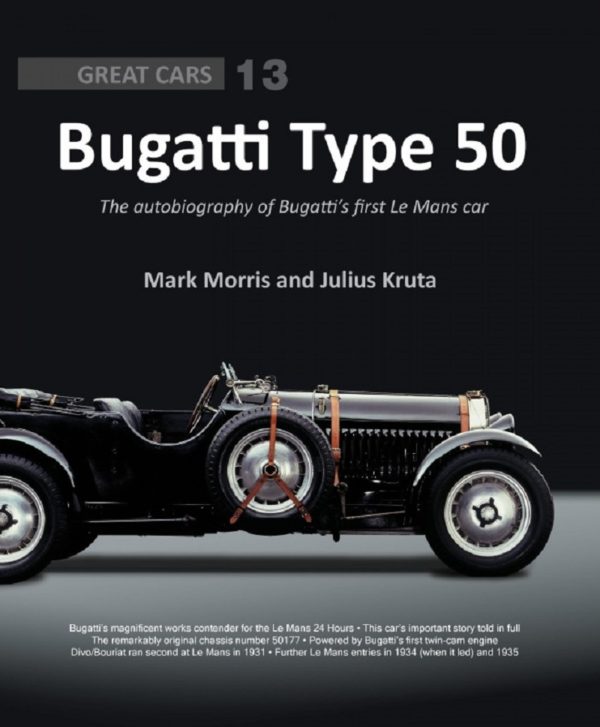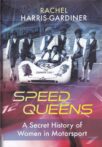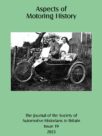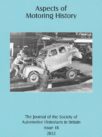
by Mark Morris and Julius Kruta
2019 review by James Loveridge
Porter Press International have continued their Great Car Series with Number 13, “Bugatti Type 50” written by the well known Bugatti experts Mark Morris and Julius Kruta and to Porter’s usual very high standards.
The subtitle “The autobiography of Bugatti’s first Le Mans car” is a trifle misleading, though not in any way to the book’s detriment, as of the 320 pages 56 are specific to Chassis 50177 although it is referred to in earlier parts of the book, so this isn’t a book for the dedicated rivet counter. However for the reader interested in both a very significant car and the story of motoring and motor sport in the inter-war period this is an invaluable addition to the already extensive history of Bugatti.
A good many of the books about Bugattis presume a certain depth of knowledge of the man and his cars but this one, presumably aimed at a more general readership, goes to considerable lengths to set the scene. What was happening in the world at large in the Key year, 1931, is summarised as, briefly, are the lives of Ettore and Jean. The previous productions of Molsheim, their sporting as well as commercial performances, are dealt with to give a comprehensive history. The evolution of the Type 50 is fully covered, mention being made of the influence of the Miller engines Bugatti had acquired from the American Duray. An interesting sidelight is cast on the “urban myth” that Bugatti made all the key parts himself as it seems many chassis and similar bits were outsourced in particular from the firm Brunon-Valette. The performances of the Team cars, including 50177, in the Le Mans 24 Hour races in 1931, 1933, 1934 and 1935 are fully covered including the problem with the Dunlop tyres in the 1931 Race.
It is clear the Type 50 was not an out and out racing car like the Type 35s and 51s and there are many illustrations of the wonderful, as well as some rather mundane, bodies fitted to these chassis for road cars.
A particularly interesting section is the details of 8 of the important Bugatti drivers associated with this group of cars and their achievements.
There is enough technical detail to satisfy most readers, accompanied by numerous illustrations. On that point they say a picture is worth a thousand words and this book, with its many beautifully reproduced and properly captioned photographs, proves that time and again.
To conclude, the car’s history after 1935 with plenty of illustrations is given.
All too often Autobiography is a synonym for Hagiography and whilst the Authors rightly celebrate the excellence of this car they do comment on what might be best described as “niggles” about Ettore’s way of going about things. One such is the perhaps needless complexity of the fixed cylinder head with the consequent need for a full engine stripdown if you want to do work “upstairs” and the, again perhaps, less than ideal performance of the transaxle he chose to fit.
The Authors are to be congratulated on their extraordinarily wide research to produce a very readable book.
Publisher: Porter Press International: porterpress.co.uk
Price: £60.
Hardback in dust jacket. 320 pages, with over 400 illustrations.
ISBN: 978-1-907085-48-2







Leave a Comment